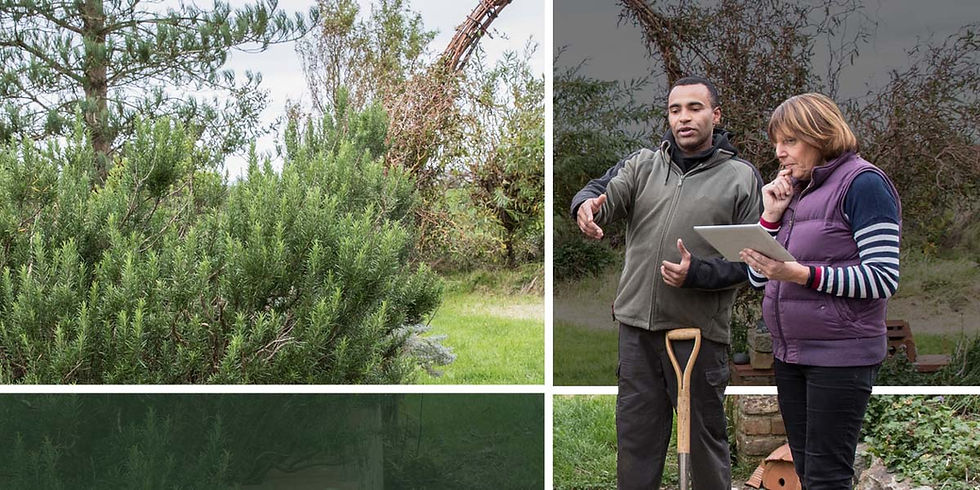When to Deadhead Maryland Flowers
- Rooted in Nature

- Oct 17, 2023
- 3 min read
Updated: Apr 17

If you dread the process of keeping your flowers pruned and deadheaded, try not to think about the overwhelming task of doing it all at once. Instead, break your yard up into sections and do a little bit at a time. You may find the process enjoyable and peaceful. Whenever you have a few extra minutes, just head out to the garden to perform a bit of deadheading maintenance, one area at a time.
Time your deadheading
You actually don't have to worry about timing when deadheading flowers. This garden chore can (and should) happen throughout the growing season, from spring to fall. You can deadhead flowers any time they begin to fade. This is easy to see in single flowers on single stems. Plants with multiple blooms on a stem, such as delphinium, begonias and salvia, should be deadheaded once 70 percent of the blooms have faded.
How often to deadhead depends on the specific plant and the weather. Towards the end of summer and into fall, you may want to allow certain plants the opportunity to go to seed. Some plants have attractive seed heads and provide food to wildlife in the cooler months. if you're in Maryland now is the perfect time to start if you hadn't already.
Choose a deadhead cutting point
Choosing the point to deadhead may seem confusing. If you cut close to the bottom of the bloom, chances are you will be left with a dry and unattractive stem. Where to deadhead or prune a plant can change depending on the species. For a basic rule of thumb, deadhead your spent flowers and stems back to ¼ inch above a new lateral flower, lateral leaf or bud. This encourages new growth and healthy foliage.
Make the deadhead cut
Although some plants can simply be pinched, using snips to deadhead most plants makes the process easier and quicker. They give me the ability to quickly reach into a plant and make a clean, tidy cut with minimal damage to the plant. Larger, woody stems, such as roses, may require a stronger tool. For these plants use pruners for clean, sharp cuts. Larger stems should be cut at a 45-degree angle. This reduces the risk of disease or damage.
Cleaning up quickly and easily
The main point of deadheading plants is to make your flower beds look amazing – so don't drop your spent blooms on the ground. It's just as easy to collect them in a small bucket for disposal in your compost pile.
Fertilize for continued growth.
Deadheading flowers and pruning encourages new growth. Remember to keep a regular fertilizer schedule so your plants continue growing strong and healthy. Annuals are especially heavy feeders. Standard water-soluble fertilizers with balanced numbers will provide all the essentials your flowers need for continued blooming.
Flowering plants serve many purposes beyond simply brightening our landscapes with a rainbow of colors. A blossom's nectar and pollen provide forage to pollinators like bees, butterflies, beetles and birds. The plant itself may even provide a safe sanctuary and habitat for wildlife. And after your pretty blooms fade away, the fruits, berries and nuts that follow feed both wildlife and people.
The primary goal of a plant is to propagate. While we think of just the flowers as the reward for a well-cared for plant, the plant itself is playing an important role for future generations. The seeds that plants produce carry the genetic material that allows them to produce new generations year after year. So, once a plant has produced a round of successfully pollinated flowers, it begins to focus its resources on developing seeds. Both annuals and perennials put their energy into producing seeds to ensure the survival of their species.
Should you need help maintaining your landscaping, please contact Rooted In Nature today.



Comments